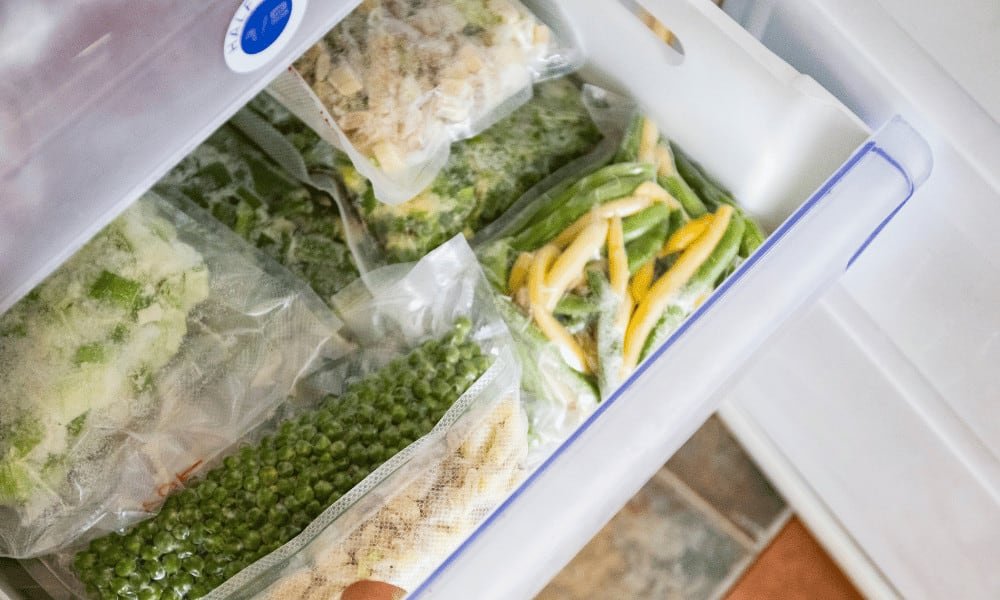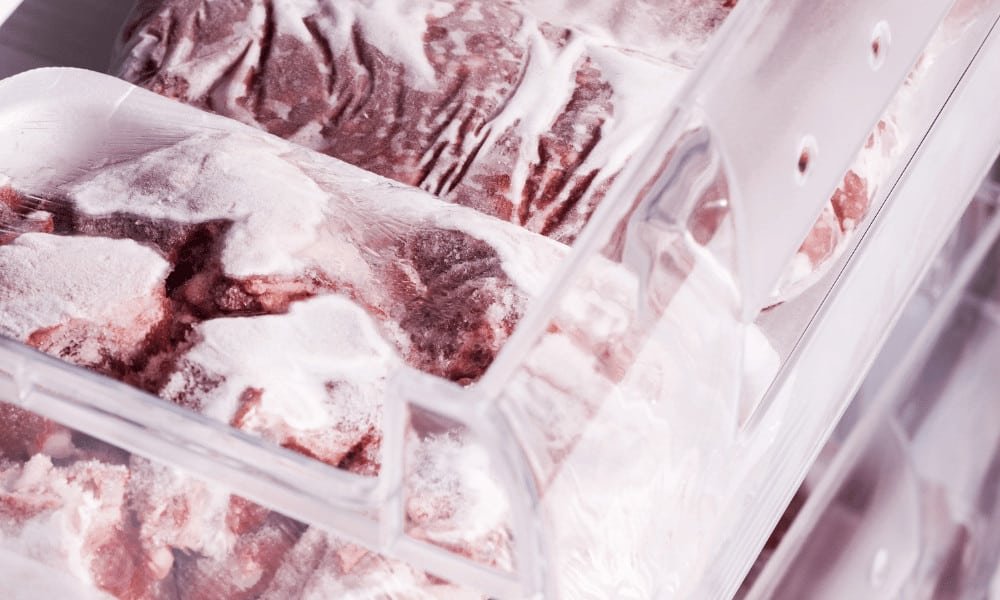It’s important to know what temperature your freezer should be to keep your food fresh and to avoid foodborne illnesses. But as we all try to save a few pennies, is it safe to turn your freezer down a degree or two?
What Temperature Should a Freezer Be?
A freezer should be kept at -18°C (or 0°F), but the setting required to attain this temperature will depend on the make and model of your freezer. It may also need to be adjusted depending on the environment and other factors.
What Temperature Should a Freezer Be to Keep Food Safe to Eat?
It would be easy to assume that if your freezer is freezing food, it must be at the right temperature, but that’s not strictly true.
For a start, different foods freeze at different temperatures. For example, milk will freeze at approximately -0.5°C, whereas meat will freeze at roughly -3°C.
However, to keep food safe, it should be stored at -18°C, which will stop bacteria and microorganisms from growing. In fact, at this temperature, food can be kept indefinitely, although the flavour and texture will start to deteriorate over time.

Why Is -18°C Considered the Ideal Freezer Temperature?
The first freezers were introduced in the 1940s, and at first, a temperature of -10°C was recommended. Over time, as we increased our understanding of the benefits of freezing, it was found that 0°F (-17.8°C) was the optimum temperature for freezing food.
The recommendation of -18°C was issued by the International Institute of Refrigeration in 1964. Experts have found that a temperature between -30°C and -18°C will slow the deterioration of vegetables by up to three times, retaining the flavour and preserving the vitamin content.
However, at lower temperatures, the energy consumption of the appliance increases, so it is felt that a temperature of -18°C offers a good balance between preservation and energy consumption.
How Can You Tell If Your Freezer Is at the Right Temperature?
Some modern freezers will give you a temperature reading on a digital display. Some freezers have indicator lights to warn you if there is a problem with the temperature of your appliance.
If your freezer doesn’t have these features, the most accurate way to check the temperature of your freezer is to buy an inexpensive fridge-freezer thermometer.
Alternatively, a quick look at the contents of your freezer will give you a good idea if your freezer is at the right temperature.
If items are frozen solid, this indicates that the freezer is at the right temperature. If there is a layer of frost over the items, it is probably too cold.
How Do You Adjust a Freezer Temperature?
The best thing to do is to consult the instruction manual for your freezer. Unfortunately, every brand of freezer is slightly different.
However, most freezers have a dial towards the top or middle of the unit. These usually run on a scale from 1 to 5 or 1 to 7, with 1 being the warmest setting.
If your freezer isn’t cold enough, turn the dial to a higher number. Conversely, if your freezer is too cold, turn the dial to a lower number. Be careful, though, as a setting of 0 will most likely turn the freezer off completely.
Does a Higher Freezer Temperature Save Money?
With electricity prices at an all-time high, many of us are looking for ways to save money. So will keeping your freezer at a higher temperature save you some pennies?
Estimates suggest that increasing the temperature by just 1°C can decrease the energy consumption of the appliance by 5-10%.
However, you mustn’t take it higher than that ideal -18°C, as any warmer than this and you are risking the safety and quality of your food.
Can a Freezer Be Too Cold?
You may be surprised to hear that there is such a thing as too cold when it comes to your freezer! Some freezers can go as low as -25°C, and you may wonder why they would offer this option if it’s not a good idea to use it.
It is true that at lower temperatures, food will keep for longer. It also means a faster freeze time for items you have just put in the freezer.
However, the disadvantages outweigh the benefits.
Firstly, at lower temperatures, your freezer will increase its energy consumption, which will increase your electricity bills and is terrible for the environment.
Secondly, the freezer will have to work harder to maintain this temperature, which will cause increased wear on its active components, such as the compressor, and reduce the working life of your appliance.
There are also short-term disadvantages. At colder temperatures, desserts like ice cream and sorbet will take longer to reach a scoopable consistency, and any items will take longer to thaw when removed for use.
Is Freezer Burn Caused by Your Freezer Being Too Cold?
You might be surprised to learn excessively low temperatures do not cause freezer burn. Freezer burn is caused by exposure to cold, dry air, which causes the product’s surface to dehydrate.

The best way to avoid freezer burn is to make sure items are tightly wrapped or enclosed in securely sealed containers.
Freezer burn looks different on different foods, but as a rough guide, on poultry and vegetables, it will often present as a paler or white patch, while on other meats, it looks grey-brown.
There will often be visible ice crystals, and patches may look different in texture, for example, wrinkled.
While freezer burn can affect the taste and texture of foods, it doesn’t actually make it unsafe to eat.
Although you can’t undo the damage done by freezer burn, all is not lost. You can trim off or remove the worst of the damage, and adding additional seasoning can help mask any changes to the flavour.
Related FAQs
Do you have further questions about the temperature of your freezer? Then perhaps these quick FAQs will help you out:
Anything above -18°C or 0°F is too high for a freezer. Although foods will freeze at this temperature, they are not deemed protected from bacteria until they are at these temperatures.
Generally, anything below -20°C is too cold for a freezer. It can ruin the texture and taste of some foods when the temperature drops below this figure.


